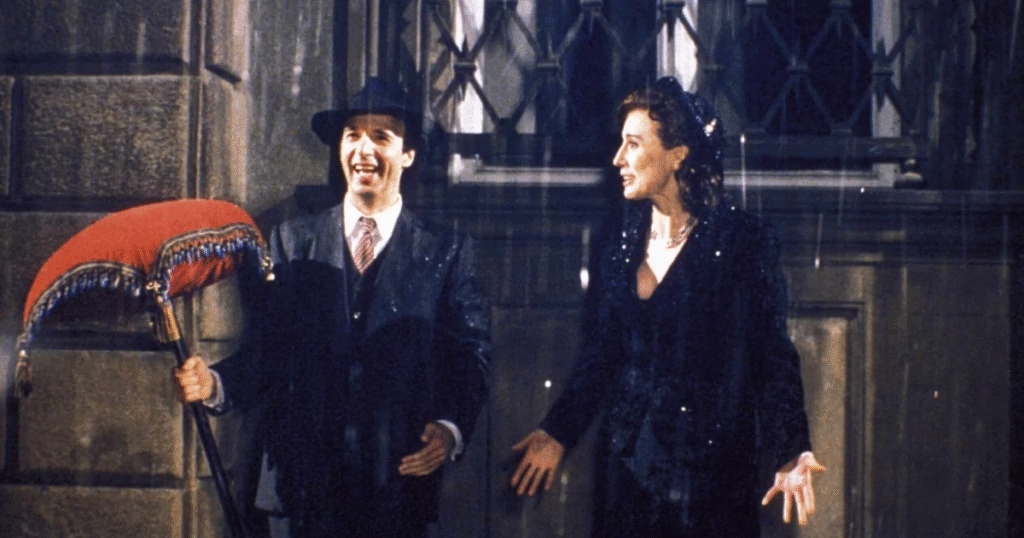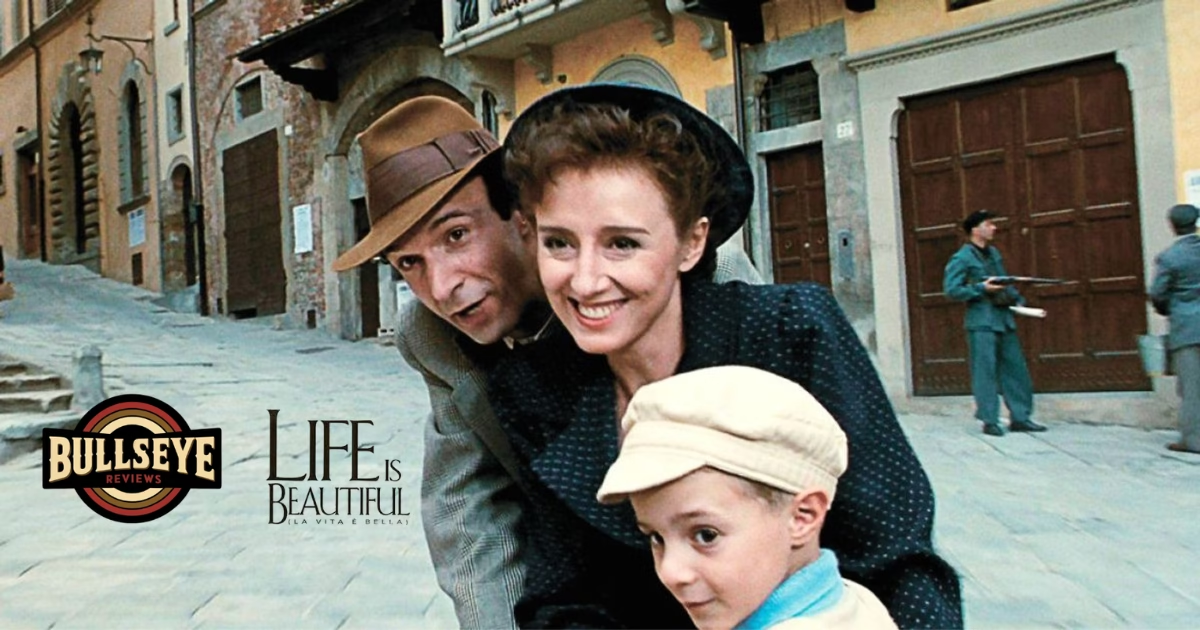A Story Told in Two Tones
Life is Beautiful (La vita è bella, 1997), directed by and starring Roberto Benigni, is a rare cinematic triumph that dares to blend whimsical comedy with the devastating reality of the Holocaust—and succeeds. Set in Italy during the rise of fascism and the Second World War, the film unfolds in two strikingly distinct halves. The first is a romantic comedy filled with charm, humor, and childlike wonder. The second, however, is a deeply moving portrayal of resilience in the face of unimaginable horror.
Benigni’s character, Guido Orefice, is a cheerful, quick-witted Jewish man whose optimism lights up every scene. His courtship of Dora (Nicoletta Braschi) is portrayed with slapstick flair and heartfelt sincerity. This first act plays almost like a fairy tale—funny, sweet, and visually bright—disguising the storm that’s quietly brewing in the background.
From Whimsy to War
The tonal shift in the second half is sudden and shocking. Guido, Dora, and their young son Giosuè (Giorgio Cantarini) are deported to a Nazi concentration camp. It is here that the brilliance of Benigni’s storytelling emerges fully: rather than revealing the horrors through explicit violence, the film lets its tragedy unfold through subtlety and contrast.
Guido creates an elaborate lie for his son, convincing him that the camp is part of a game where the winner earns a real tank—a lie that becomes his son’s shield from trauma. This “game” becomes the emotional core of the film, transforming horror into a testament to a father’s love.
Humor as a Survival Tool
Benigni walks a tightrope between comedy and catastrophe with astonishing grace. His use of physical comedy—reminiscent of Charlie Chaplin—isn’t to mock the tragedy but to elevate the humanity within it. It’s this very humor that preserves the innocence of his son, and arguably, the soul of the viewer.
Critics have debated the ethics of injecting comedy into a Holocaust narrative, but Life is Beautiful never trivializes the atrocity. Instead, it chooses to highlight the beauty of human spirit and familial love amid darkness. It’s not a film about the Holocaust, but one that uses it as a backdrop to explore a more intimate emotional journey.
Performances and Technical Brilliance
Roberto Benigni delivers a career-defining performance—his exuberance as Guido in the first half makes the heartbreak in the second half all the more poignant. Nicoletta Braschi is quietly powerful as Dora, whose choices speak louder than words. And young Giorgio Cantarini gives a performance filled with wonder and innocence that never feels forced.

Nicola Piovani’s Oscar-winning score subtly underlines the tonal shift of the film—from whimsical to tragic. The cinematography and set design enhance the fable-like quality of the early scenes and the bleak realism of the later ones. Editing choices are simple but purposeful, often lingering just long enough to let emotional beats land.
A Film That Lingers
The true power of Life is Beautiful lies in what it doesn’t show. It never depicts gas chambers or mass executions. Instead, it relies on implications, on the quiet horror behind hopeful eyes. This minimalism only deepens the emotional impact. Scenes like Guido’s final march or Giosuè’s joyful ride in a real tank strike the perfect balance of heartbreak and catharsis.
Even its symbolism—the tank, the riddles, the voice-over narration—adds layers of meaning that reward close viewing. The film opens and closes like a fable, and much like a fable, it leaves the audience with a moral: love and imagination can be a form of resistance.
Final Thoughts
Life is Beautiful is not just a Holocaust film. It’s a film about a father’s desperate effort to preserve his son’s joy, about love that defies oppression, and about the quiet, unyielding hope that can shine even in the darkest places. It’s a rare work that evokes both laughter and tears in equal measure, without undermining either.
Bullseye Rating:★★★★★ (5/5 stars)
A deeply affecting masterpiece that reminds us why storytelling matters—even, and especially, in the face of tragedy.

